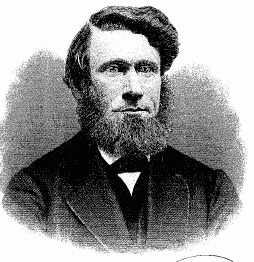In the grand symphony of classical music education, few names resonate as profoundly as Ferdinand Kuchler. Born on July 14, 1867, in Giessen, Germany, Kuchler would grow to become not just a talented violinist and composer, but a visionary pedagogue whose influence continues to shape the world of violin instruction to this day.
Picture a young Ferdinand, his fingers dancing across the strings of his violin, his eyes alight with the passion that would define his life’s work. From an early age, Kuchler displayed a remarkable aptitude for music, particularly the violin. This talent led him to the prestigious Hoch Conservatory in Frankfurt am Main, where he studied under the tutelage of master violinists Johann Naret-Koning and Hugo Heermann from 1883 to 1888.
Kuchler’s journey as a professional musician began in 1889 when he secured the position of principal violist with the Symphony Orchestra in Basel. It was here that he first dipped his toes into the world of teaching, taking on students at the local music school. This experience would prove to be the catalyst for his lifelong dedication to music education.
In 1898, Kuchler’s talents were recognized with an appointment as a violin teacher at his alma mater, the Hoch Conservatory in Frankfurt. This period marked a significant turning point in his career, as he began to develop the teaching methods and compose the instructional pieces that would become his lasting legacy.
Kuchler’s approach to violin instruction was revolutionary for its time. He understood that to nurture young talent, one needed more than just technical exercises; students required music that was both educational and engaging. This philosophy led him to compose numerous works specifically designed for violin students, including several concertos that remain popular in music education circles today.
One of Kuchler’s most significant contributions to music education was his two-volume “Course of Violin Instruction,” published by Hug-Verlag in Zurich. This comprehensive method book became a cornerstone of violin pedagogy, guiding generations of violinists until the mid-1960s. Its enduring popularity is a testament to Kuchler’s deep understanding of both the technical aspects of violin playing and the psychological needs of developing musicians.
Throughout his career, Kuchler continued to balance his roles as performer, composer, and teacher. In 1910, he returned to Basel, where he took on the directorship of a private music school and worked as a choral conductor. This diverse experience further informed his approach to music education, allowing him to view the learning process from multiple perspectives.
The culmination of Kuchler’s career came in 1927 when he was appointed as a violin teacher at the prestigious Landeskonservatorium der Musik zu Leipzig (State Conservatory of Leipzig). Here, he continued to refine his teaching methods and compose instructional pieces until 1936, just a year before his death.
Kuchler’s compositions for violin students are notable for their musicality and pedagogical value. Works like his “Concertino in the Style of Antonio Vivaldi” demonstrate his ability to create pieces that not only teach technical skills but also introduce students to different musical styles and historical periods. This concertino, in particular, focuses on the use of first and third positions on the violin, cleverly disguising technical exercises within an engaging musical framework.
Beyond his concertos and method books, Kuchler composed a wide range of instructional pieces. His “100 Etudes for the Violin (Elementary and Intermediate Grades)” and “Elementary Method of Double-Stopping in All Major and Minor Keys” are just a few examples of his commitment to providing students with comprehensive, structured learning materials.
Ferdinand Kuchler passed away on October 24, 1937, in Leipzig, leaving behind a rich legacy in the world of violin pedagogy. His life’s work represents a perfect harmony of artistry and education, demonstrating that the two need not be mutually exclusive. Through his compositions and teaching methods, Kuchler opened the door to the world of classical music for countless young violinists, making the journey from beginner to virtuoso a little smoother and a lot more musical.
Today, nearly a century after his death, Kuchler’s influence can still be felt in violin classrooms and practice rooms around the world. His music continues to challenge and inspire young violinists, while his pedagogical approach remains a model for music educators. In the grand orchestration of music history, Ferdinand Kuchler’s melody plays on, guiding new generations of violinists towards mastery of their craft.


